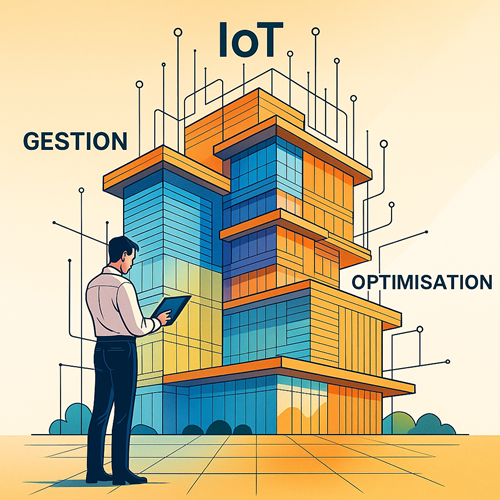
In the last edition of the CCIF magazine ECHO, we had the chance to co-author an article that will appear in the June edition; here it is in preview.
Smart energy management, monitoring and access control, occupant comfort tracking, rapid alert transmission — all these functions define smart buildings. These rely on a wide range of technologies, including IoT (Internet of Things) devices — electronic sensors, building management systems, etc. — connected to the Internet and to each other. IoT sensors handle real-time data collection, which is then processed in a Cloud environment.
Frédéric Montet, scientific collaborator at HEIA-FR, explains: “In the collaborative DiagnoBat project — diagnosing optimization potential in buildings through a data science and AI approach — we focused on optimizing the buildings of the project’s partner companies through district heating systems (CAD). These systems can supply over 150 buildings, so optimizing them provides a significant leverage effect that is unique in the building sector.”
Sébastien Rumley, professor at HEIA-FR, adds: “With the rise of the Cloud and the near-ubiquity of the Internet, IoT systems have become very accessible. These devices need to be integrated into the building, represented in the plans, understood by the various trades, and above all, adopted by owners, operators, and users. They tend to multiply without coherence or interoperability among them. This creates redundancies and increases complexity. We are planning to develop a collaborative project to tackle these challenges. In general, a smart building is safer, more efficient, and more comfortable — but also more complex. If the installation is poorly designed, this complexity can instead increase operating costs. Therefore, it’s essential to ensure that the cost-benefit ratio remains positive over the long term.”
